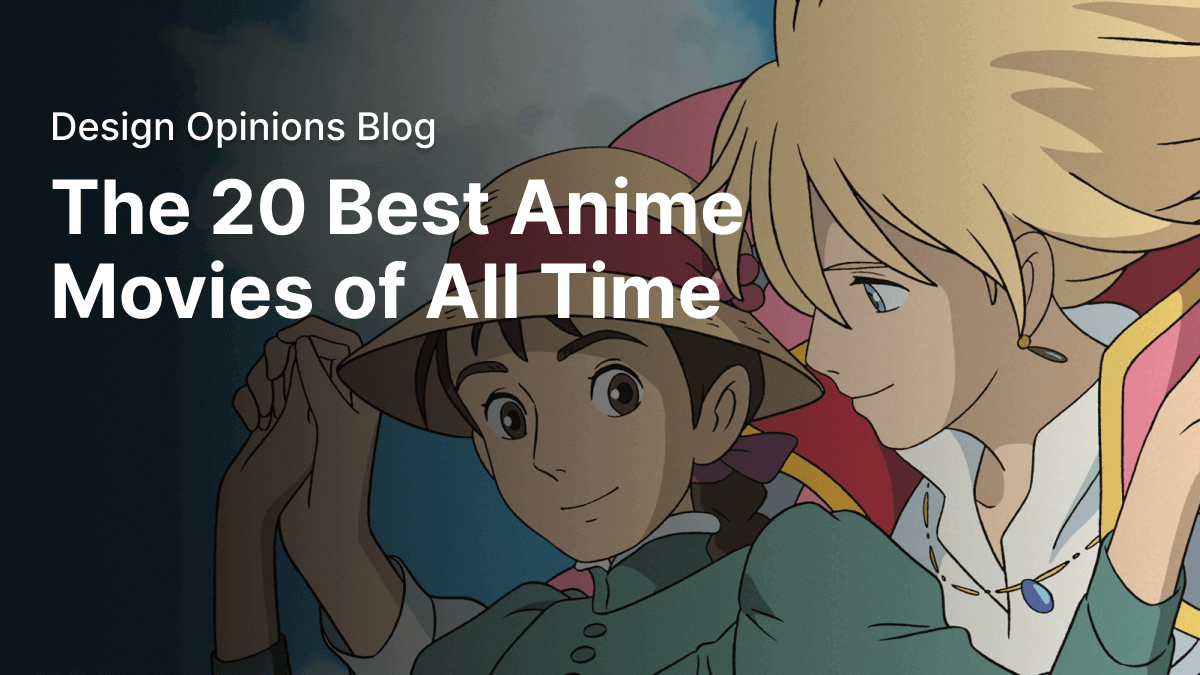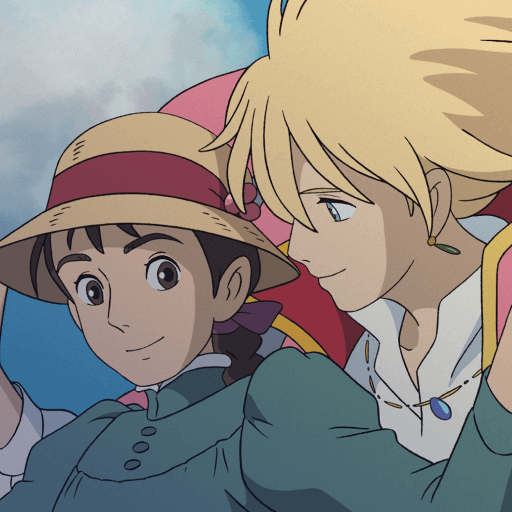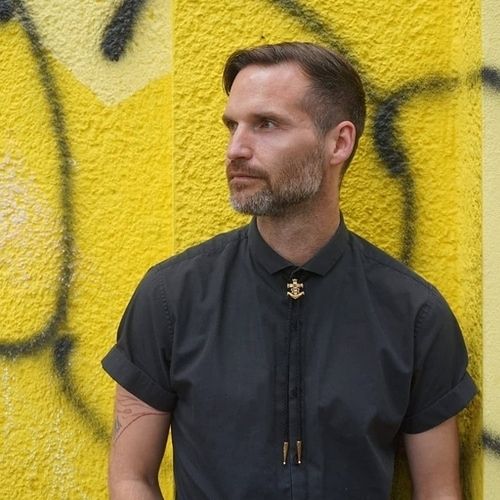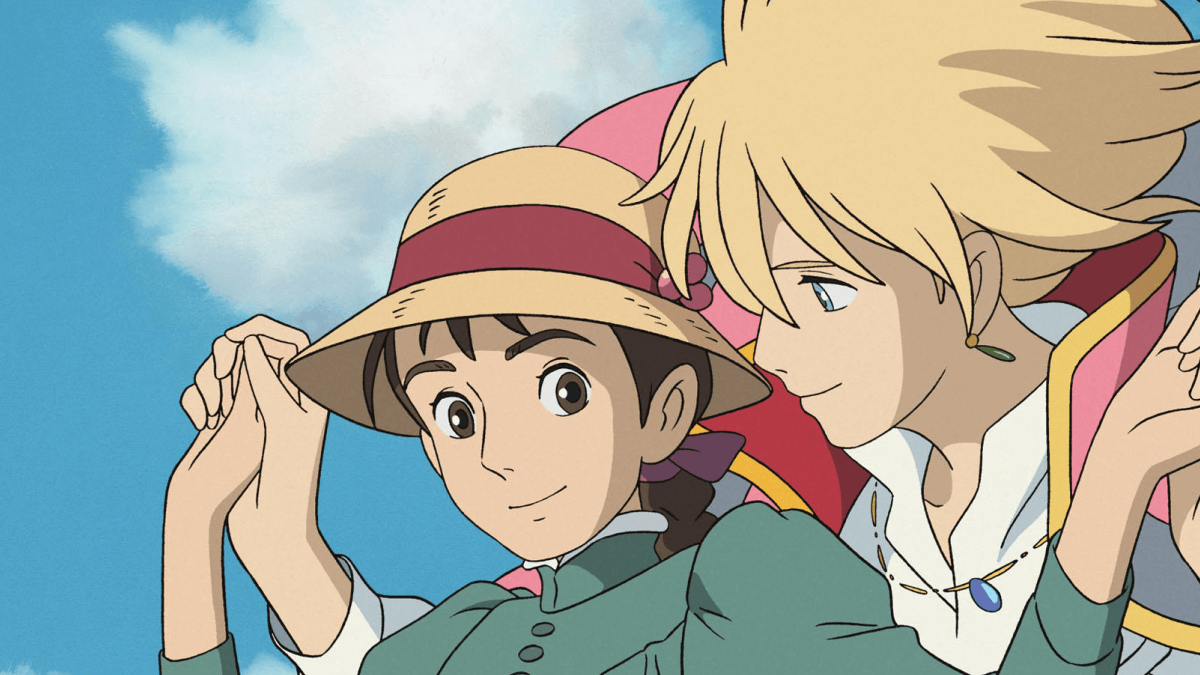
If someone tries to tell you that anime films are just cartoons and that only kids should watch them, you can tell them that they don't have any idea what they're talking about.
Anime is simply the term the West uses to refer to animated films that are made in Japan, and the anime industry in Japan has produced some of the best movies of all time –and we really mean the best movies of all time. Perhaps you’re new to the world of anime and don’t believe what we’re saying, so we’ve taken the time to compile our list of the best anime films ever made.
All of the movies on this list are outstanding touchstones of the genre. We didn’t think it was fair to rank them, as they really are all brilliant in their own right. Instead, we have put the list in alphabetical order. So read on to learn more about the films that you need to add to your personal watchlist.
Jumpstart your ideas with Linearity Curve
Take your designs to the next level.
A Silent Voice (2016)
This anime, produced by Kyoto Animation and directed by Naoko Yamada, is based on the manga by Yoshitoki Ōima. At the center of the story is a young boy called Shoya Ishida. As a high school student, he bullied a deaf student called Shōko Nishimiya. Shoya’s bullying backfired and he becomes a social pariah who is cast off from his classmates and friends. He reaches a low ebb and is on the verge of committing suicide, but he reflects on his previous actions and decides instead to try and make amends for what he has done.
The film then charts his journey and efforts to try and fix what happened with Shōko. It’s a touching and emotional tale that looks at deep issues such as disability and bullying, and shows the human potential for self-improvement and redemption. A Silent Voice is a visually beautiful animated film and a truly touching story.
Akira (1988)
The post-apocalyptic, cyberpunk future in which Akira is set is actually the year 2019. It takes place in what is known as Neo-Tokyo, after it has been destroyed by the events of World War III. Two teenage members of the Bosozoku biker gang, Shōtarō Kaneda and Tetsuo Shima, are the main characters. Tetsuo has a bike accident, which results in him gaining supernatural powers and becoming a bit of a psychopath. It also draws the attention of a secret government-backed organization.
The visual aesthetic of the Akira anime is definitive of the genre, and even if you haven’t seen it before, this Japanese animation will almost certainly feel familiar as its influence is far reaching and it has been widely referenced. The film was directed by Katsuhiro Ôtomo and is based on his original manga series of the same name. When the film was being made, the manga series was still ongoing, which led the storylines and finales to be quite different.
Castle in the Sky (1986)
This is the first of quite a number of Studio Ghibli productions on this list, as the famous animation house is responsible for many incredible movies that have been both critical and commercial successes. It’s directed by Hayao Miyazaki, and displays his unique and recognizable animation style. The story follows the life of Sheeta, who is searching for the airborne island Laputa, of which she is the rightful ruler.
In classic Studio Ghibli fashion, Sheeta is a strong female character who shows how important and powerful kindness can be. Castle in the Sky also earned praise for the high quality of the dialogue and some perfectly delivered one-liners.
Cowboy Bebop: The Movie (2001)
Before this movie adaptation, Cowboy Bebop was already a hugely successful TV series which was crazy popular both in Japan and internationally. Any worries anime fans might have had about how it might translate to a movie format were ill-founded – Director Shinichirō Watanabe made it work with style. Watanabe said he treated each episode as a short film, and so extending this to a feature length was no problem.
The movie is set between episodes 22 and 23 of the TV show, and follows the Bebop crew of Jet Black, Spike, Edward, Faye Valentine, and Ein as they try to stop a terrorist who wants to eliminate the population of Mars. As well as plenty of action-packed scenes, the film also brings emotion to proceedings. The offbeat and stylish tone of the film both satisfied fans of the series and converted newcomers.
Ghost in the Shell (1995)
This cyberpunk neo-noir classic was directed by Mamoru Oshii and is based on the original manga written by Masamune Shirow. It’s set in a dystopian vision of the future, and follows a cyborg policewoman called Motoko Kusanagi as she hunts down a hacker known as The Puppet Master. The action is fast-paced and the plotline is thrilling, plus the cinematography is beautifully detailed.
If you’re a fan of dystopian futurism a la Blade Runner, then you’ll love Ghost In The Shell. The film went on to be a big influence on The Matrix, and you can see elements of the movie in lots of other sci-fi productions. It even went on to get the Hollywood live-action treatment, with Scarlett Johansson controversially getting the lead role. Our advice is to stick to the original and pretend the remake doesn’t exist. Mamoru Oshii went on to direct Ghost in the Shell 2: Innocence, which is actually a stand-alone work and a non-canon sequel.
The Girl Who Leapt Through Time (2006)
If you were a teenager who had the ability to travel through time, what would you do with it? This is the question that director Hosoda poses and then answers in The Girl Who Leapt Through Time. Mokoto is a teenage girl who develops the ability to time travel, and she uses it in the exact way you would expect – by doing things like fixing her grades and correcting mildly painful experience she had been through.
Discover the Top Anime Movies Ever Made
Dive into the world of anime with our curated list of the 20 best anime movies. Explore the masterpieces that have defined the genre and captivated audiences worldwide.
This time traveling and tampering seemed harmless to begin with, but Mokoto soon notices that it is having unintended negative consequences on the lives of others, and so she changes her approach. It’s a coming-of-age story with a twist, and uses an inventive story to show how someone can go from a stereotypically selfish teenager into a more considerate person.
Grave of the Fireflies (1988)
And here we are with more Studio Ghibli greatness, this time directed by Isao Takahata. Grave of the Fireflies is based on the short story by Akiyuki Nosaka, and both the book and the anime are intensely moving and heartbreaking. The tale follows a brother and sister, Seito and Setsuko, in their lives as they try to survive both during and after World War II. Their mother had died after their house was bombed during the war, making orphans of the pair. After a short stay with an aunt, Seito and Setsuko decide to run away and fend for themselves.
Grave of the Fireflies doesn’t shy away from the emotionality of the subject matter, and while this isn’t a feel good movie, it is truly touching and sad. It shows the reality of war and the impact that it had on children and on Japan. The animation is beautiful and intricate, and even though you won’t have a smile on your face when you finish watching it, it will leave a long-lasting impression.
Howl’s Moving Castle (2004)
You’re going to be seeing the name Studio Ghibli a lot in this list, but that’s understandable because the studio consistently produces amazing work. Howl’s Moving Castle was directed by Hayao Miyazaki and is based on a novel of the same name written by British author Diana Wynne Jones. The story is a little more whimsical than the heaviness of Grave of the Fireflies. It follows a young woman called Sophie who has been cursed by a witch and transformed into a 90-year-old woman.
To try and break the curse, Sophie teams up with a wizard called Howl, and the adventure unfolds. As with all of Studio Ghibli’s work, the animation is absolutely outstanding, with plenty of rich detail and vibrancy. It went on to become one the highest grossing Japanese films of all time, both in Japan and worldwide.
My Neighbour Totoro (1988)
Oh wait, what is this now? Another Studio Ghibli film? And again directed by Hayao Miyazaki? This shouldn’t be surprising as we’ve already established that pretty much everything the studio (and Hayao Miyazaki) touch turns to gold. This film was released at the same time as Grave of the Fireflies as part of a double feature, with My Neighbour Totoro being shown second. It provided some much needed fantasy escapism after the heartfelt heaviness of Grave of the Fireflies
In the story, two young sisters, Satsuki and Mei, have moved to a rural village in order to be closer to their ill mother, who is staying in a hospital close to the village. The kids come into contact with cuddly forest spirits and find themselves drawn into their world. The film is a family favorite, but we defy anyone to not enjoy it. The cuddly forest spirit Totoro was so beloved that it actually became Studio Ghibli’s mascot.
Nausicaä: Valley of the Wind (1984)
Finally another anime that isn’t a Studio Ghibli production! But oh wait – it’s directed by Hayao Miyazaki of Studio Ghibli fame, and is often considered a Studio Ghibli film even though it slightly predates the founding of the studio. Oh well, when someone is as talented a director and animator as Hayao Miyazaki, he’s going to be in a list like this a lot.
Nausicaä of the Valley of the Wind is Miyazaki’s second film, and is based on the manga that he himself wrote in 1982. The movie establishes some of the recurring themes that he comes back to throughout his career, namely a deep appreciation of the natural environment and a passion for flight. The story is set 1,000 years after an apocalyptic war wiped out industrial society, and follows the princess Nausicaä as she tries to find a way for people and nature to coexist harmoniously. The animation is breathtaking and the level of detail is astounding, and the film really set the tone for Miyazaki’s future success.
Ninja Scroll (1993)
Written and directed by Yoshiaki Kawajiri, this anime film had a big impact on the genre and you can see its influence on later films like Ghost in the Shell. It’s different to a lot of the anime on this list by virtue of that fact that is all about the action. A straight up ninja flick, it’s very violent, and some of the 90’s ideas might not hold up so well today, but back then it was so stylish and cool.
The story is set in feudal Edo-era Japan and follows mercenary swordsman Kibagami Jubei on his mission to stop the Shogun of the Dark. It’s extremely gory and hyper-realistic, and there are plenty of high octane fight scenes to keep you entertained. The animation is vibrant and full-on, and while some of the dialogue might be dated, it still looks fresh.
Paprika (2006)
There are a number of movies by acclaimed director Satoshi Kon in this list. Paprika was the final film he made before he passed away in 2010 at the young age of 46, and for some people it is his definitive work. It’s based on Yasutaka Tsutsui’s 1993 sci-fi novel. The tone is super psychedelic and trippy, and it has some truly out there scenes and imagery.
The story revolves around a device called a DC Mini that allows psychologists to enter the dreams of their patients. The device is stolen by someone that can only be described as a dream terrorist. A doctor and dream detective, Atsuko Chiba, uses the device to track down the thief, entering the dream space using the alias ‘Paprika’. Paprika is a perfect slice of sci-fi anime.
Perfect Blue (1999)
This is Satoshi Kon’s debut feature, and boy – what a way to make an entrance. The story is based on Yoshikazu Takeuchi’s novel, and the film was produced by the legendary Madhouse studio. It’s a psychological thriller that tells the tale of Mima Kirigoe, a former J-pop idol who tries to pivot careers and become an actress. Part of her fanbase doesn’t appreciate the move, and she starts to be stalked and harassed by an obsessive fan. Or does she?
The movie is seeped in paranoia and tension as it explores the dark underbelly of fame. Originally intended to be a live-action film, when financing couldn’t be secured it was instead turned into an anime. This hasn’t stopped it from being incredibly influential on film aficionados though – acclaimed director Darren Aronofksy was famously influenced by Perfect Blue, and his film Requiem for a Dream features a short-for-shot remake of a scene from Perfect Blue, and the storyline for Black Swan bears more than a passing resemblance to Perfect Blue also. Some argue that Aronofsky crossed the line from homage into straight up copying, and it was something that apparently rubbed Satoshi Kon up the wrong way, as he never really received the accolades he deserved while Aronofsky raked in the cash.
Princess Mononoke (1997)
And here we are again with yet more Studio Ghibli action, courtesy of the seemingly unstoppable Hayao Miyazaki. Princess Mononoke is a classic of the Studio Ghibli canon, with its focus on environmentalism and a nuanced approach to morality. The story is set in the Muromachi period of 14th Century Japan and follows Prince Ashitaka as he tries to find a cure for a curse he has been inflicted with. As he travels across the land in search of the cure, he meets San, a young woman who has been raised by wolves.
Looking for more cool drawing ideas?
Check out our list of 25 easy tutorials.
San and Prince Ashitaka join forces and find themselves caught up in a war between Gods of the forest and a human mining colony. It’s a tale of corruption and greed, and the fight against it. The film was a huge success – it was the highest-grossing film in Japan in its year of release, and it went on to become the fourth highest-grossing Japanese films of all time in Japan, and one of the top ten highest grossing Japanese films worldwide.
Spirited Away (2001)
OK this is the last Studio Ghibli title on this list, we promise. But oh boy, what a classic. Written and directed by Hayao Miyazaki (who else?), Spirited Away is regarded by many as not only the greatest anime movie of all time, but also one of the best movies of all time, anime or not. This film was not only a huge success in Japan, it was also a humongous international success. It won the Oscar for Best Animated Feature, becoming the first (and only) hand-drawn animation that was not in the English language to win this award. Spirited Away quickly became the highest-grossing film in Japan in the year of its release, and for the next almost 20 years it remained the highest grossing Japanese film of all time.
It tells the story of a 10-year-old girl called Chihiro and her quest to rescue her parents from an evil witch who has turned them into pigs. The animation is beautiful and detailed, and the tale is surreal yet magical. Spirited Away is arguably Hayo Miyazaki’s crowning glory. It’s an absolutely timeless classic and a genuine must-see movie.
Summer Wars (2009)
This is the third anime film by director Mamoru Hosoda, who had previously made a big impression with his second film, The Girl Who Leapt Through Time. In Summer Wars, a high school math genius named Kenji has agreed to pretend to be the boyfriend of a girl called Natsuki, and go with her on a visit to her family home for her grandmother’s 90th birthday. The problem is that Kenji actually has a massive crush on Natsuki and likes her real. The bigger problem is that while staying at Natsuki’s mansion, Kenji accidentally unleashes an artificial intelligence demon called the Love Machine. The AI is hell-bent on causing mayhem and destruction, and Kenji tries everything he can to stop it.
Like in The Girl Who Leapt Through Time, Mamoru Hosoda threads in a coming-of-age theme into the wild storyline. The characters are all very endearing and it’s a warm-hearted and fun film that is also visually gorgeous.
Tokyo Godfathers (2003)
Of the four anime films that Satoshi Kon made, Tokyo Godfathers is probably the most ‘normal’, eschewing the far-out, trippy style he showed off in Paprika and Perfect Blue. Co-written by Keiko Nobumoto, the writer of Cowboy Bebop, Tokyo Godfathers tells the story of three homeless people – a drag queen, a teenage runaway and an alcoholic – who discover an abandoned newborn baby on Christmas Eve. The unlikely trio set about trying to find the baby’s parents, and as they roam through the streets of Tokyo they meet characters who help uncover the truth about the baby’s shady origins.
Some of you out there might be thinking that this sounds a bit like the Hollywood comedy Three Men and a Baby, and while the plot is a bit similar and both movies have comedic moments, Tokyo Godfathers is the one that will punch you in the gut – in a good way.
Weathering With You (2019)
This delightfully charming film is written and directed by Makoto Shinkai, who some people in the anime industry have been calling ‘the new Miyazaki’. Shinkai has played down this comparison, but considering that two of his movies are already in the top ten highest grossing Japanese movies worldwide, if he keeps going this way then the comparison will be more than valid.
Weathering With You follows a young high school boy Hodaka Morishima who has run away from his home on a remote island in order to start his life afresh in Tokyo. When he gets to the big city, he saves a young girl named Hina Amano from a group of thugs. It turns out that Hina has the supernatural ability to control the weather, and they set about using her power to help people who need good weather on important days. It’s a charming and thoughtful film that tackles social issues such as poverty in a deft way.
Wolf Children (2012)
A story about half-human, half-wolf hybrid children might not sound relatable on paper, but in actuality this tale by Mamoru Hosoda has themes that you’ll connect with in a deep way. Wolf Children follows Hana, who is the single mother of two children. The children’s father died in an accident while trying to get food to feed his family, and so it has fallen on Hana to raise the children by herself. To complicate matters further, the father was a werewolf, and so Hana is raising two lovable half-human, half-wolf kids. The children are young and haven’t yet mastered how to control their special ability to change into wolf form, and Hana has to hide her kids true nature from the world.
This is the third film by Mamoru Hosoda to make this list, showing what an incredible knack he has for creating brilliant anime movies. Wolf Children is an endearing and touching story that shows the importance of family and supporting each other.
Your Name (2016)
Your Name is the last film on our list, but is by no means the least. Written and directed by Makoto Shinkai, this movie went on to become the highest-grossing film in Japan on its year of release, and is the third highest-grossing Japanese film of all time, both in Japan and internationally. In short, people absolutely love Your Name, and it’s not hard to understand why.
The film is a delicious mix of romance and fantasy, with a dash of drama. It follows two lead characters – Taki Tachibana is a young boy who lives in metropolitan Tokyo, and Mitsuha Miyamizu is a young girl from a small rural village in the Takayama area in Japan. They inexplicably start to switch bodies with each other, sporadically and repeatedly, and the pair have to navigate the complexities of spending days in each other’s lives. The film explores issues of love, friendship and gender identity. There’s more to it than that, but you’ll just have to watch it for yourself. The animation is absolutely stunning, and the depictions of the locations have even inspired people to visit the real-life areas they are based on. It’s a masterpiece in every sense of the word.
Conclusion
The problem with any list is that you can’t fit everything on it, and there are so many other great anime films that we weren’t able to include. We hope this rundown has helped inspire you to explore the world of anime and introduced you to some new favorites. Happy watching!
If you're an avid reader of the Curve blog, you'll know how obsessed we are with animation. But if not, check out our other features on legendary animation studios Studio Ghibli and MAPPA.
Jumpstart your ideas with Linearity Curve
Take your designs to the next level.


Share this!
Jonny Tiernan
Jonny is a contributing writer to the Linearity Blog.


:quality(75))
:quality(75))



:quality(75))




